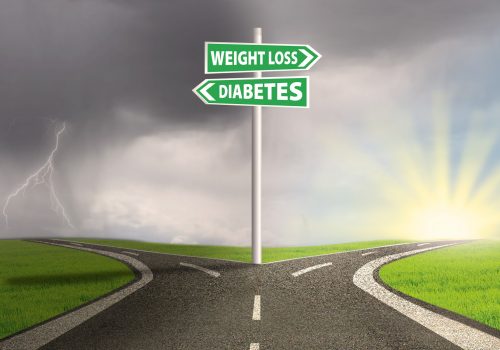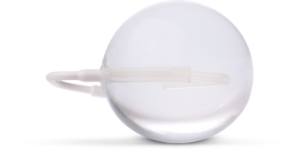Diabetes, a condition closely linked to obesity, occurs when the body has issues with insulin production or action, leading to increased blood glucose levels. There are two types of diabetes, Type 1 and Type 2.
Type 1 diabetes emerges when one’s body begins to destroy pancreatic beta cells, the cells in the body that create insulin and regulate one’s blood glucose levels. This type of diabetes is most commonly found in children and young adults, however, type 1 diabetes can occur to someone of any age.
Type 2 diabetes, on the other hand, normally begins with a condition referred to as “insulin resistance”, whereas the body does not use its insulin properly. With a growing need for insulin to regulate one’s blood glucose levels, the pancreas starts to have a diminished effect on insulin productions, eventually leading to a complete failure of insulin production.
Type 2 diabetes is the condition we will be focussing on, being that 90-95 percent of diabetes patients are diagnosed with type 2. In fact, according to the CDC, there are over 34 million people in The United States who have been diagnosed with diabetes, over 10% of the entire nation. According to the World Health Organization, around 422 million people around the world have diabetes.
So, what does all of this have to do with my gastric balloon? Let’s explain!
Obesity and the risk of Diabetes:

First and foremost, we must touch on the various factors that can increase one’s risk of type 2 diabetes. Like most things in life, genetics play a central role in determining one’s risk for diabetes. Someone with a first-degree relative that has been diagnosed with diabetes has a significantly higher chance of being diagnosed themselves, anywhere from 5 to 10 times greater risk.
Another interesting factor is the correlation between diabetes and low birth weight. Studies have shown that low birth weight can lead to increased chances of insulin resistance and glucose intolerance, leading to type 2 diabetes. However, more recent data has provided positive news to those who were born with a low birth rate, showing that lifestyle changes such as diet and exercise can lower one’s risk of being diagnosed with diabetes.
Now for the kicker. Diabetes is closely related to obesity, being that risk for diabetes grows with increased body weight. In fact, those who are affected by obesity are 7 to 10 times more likely to develop diabetes. Additionally, people who maintain a body mass index of 35 or higher are 20 times more likely to develop diabetes.
So, what can be done to decrease the risk of diabetes?
Diet, Exercise, and a Weight Loss Solution:

While it is difficult to determine what causes one to have insulin resistance, there is an incredible amount of data pointing to the fact that obesity and a lack of physical activity only make one’s insulin resistance far worse. The fact that obesity is linked to insulin resistance and type 2 diabetes shows that weight loss can help control the disease.
However, a person’s weight isn’t the only factor in determining their potential insulin resistance levels, the location of excess body weight is a dead giveaway. Someone who carries their excess body weight around their abdomen and stomach region is of a higher likelihood to experience insulin resistance.
For more information on how to lose belly fat >>> https://bit.ly/3oJVMfr
So, what can one do to improve their insulin action and reduce their risk of type 2 diabetes? Experts have determined that a 5%-10% decrease in excess body weight can lead to improved insulin action. But, if you want to fully treat your diabetes, a program of diet, exercise, and behavior modifications can lead to successful diabetes treatment.
In regards to one’s diet, if you’re attempting strict weight loss then you should be most focussed on your calorie intake. By decreasing your calorie intake to create an energy deficit of 500-1,000 calories a day, one can expect to lose 1-2 pounds per week. Additionally, limiting your carbohydrates can produce effective results, being that carbohydrates increase one’s blood sugar more than other foods.
Improving one’s physical activity is another way to reduce one’s risk of developing diabetes and even decrease the mortality rates among those who are already diagnosed. Ultimately, one should aim for 30-45 minutes of activity levels 5 times per week. These periods of activity do not need to be performed at once, you can split up your physical activity over the course of each day. Ideally, you should aim to hit between 8,000-10,000 steps per day; however, any increase in activity levels from what you’re used to will help you balance your weight loss.
In addition to diet and exercise, weight loss surgery can be considered for patients in an attempt to lower their risk for type 2 diabetes, or for those who have already been diagnosed. According to Obesity Action, bariatric surgery should be considered for those who have a bmi above 40, or those with a bmi between 35-40 with pre-existing medical problems. Studies have shown that bariatric surgery can cure one’s diabetes due to the weight loss benefits coupled with the hormonal changes that occur as a result of the surgery. When other methods of weight loss have not worked, bariatric surgery is often the best chance for a patient to reach their weight loss goals.
The Spatz3 Adjustable Weight Loss Balloon:

If you’re considering weight loss surgery, the Spatz3 Adjustable Gastric Balloon is the right choice for you. While falling under the category of surgery, the Spatz3 is actually a non-surgical procedure performed in an outpatient center. While under conscious sedation, the balloon will be implanted endoscopically, meaning there are no incisions and no hospitalization required; you’ll be walking out the door within an hour!
The Spatz3 Adjustable Gastric Balloon maintains the highest weight loss results and the highest overall success rates on the market. As the ONLY adjustable gastric balloon, we proudly boast 85% success rates and 53.6% excess weight loss! In addition to our incredible weight loss numbers, the Spatz3 will help you develop healthy eating habits to keep you looking your best long after the balloon is removed. Over 70,000 bariatric patients have trusted the Spatz3 to help them meet their weight loss goals and lower their risk of significant medical issues… will you be next?
Start leading a healthier life today >>> Find A Local Representative


